We were going to get up very early, but it was still wet and cloudy out. So we slept a few more hours and by the time we got up, the sun had emerged and the weather was beautiful. By 9 am, we were on the road headed for the Wildlife Loop road. This is an 18-mile long road that goes through the open grasslands. We were quite excited to have not just one, but two marmots run across our path. We also saw more deer, prairie dogs and pronghorn.

Marmots are the largest member of the squirrel family. They are basically large ground squirrels. Groundhogs are also technically marmots, but the marmot name is generally reserved for those animals living in mountainous areas.

It is nicknamed Whistle Pig for its high-pitched sound intended to warn other members of the colony of possible danger.

We rounded a corner and saw the road was blocked off by people feeding the wild burros... in spite of the countless signs saying NOT to feed the animals. Eventually we managed to squeeze by.
Burros are not native to this area. These are the descendants from the herd that once carried visitors to the top of Harney Peak. When the rides were discontinued, the animals were simply released into the park.

Blocking the road




Sneaking past

Either we're being given the evil eye for not feeding him, or he's just half asleep!
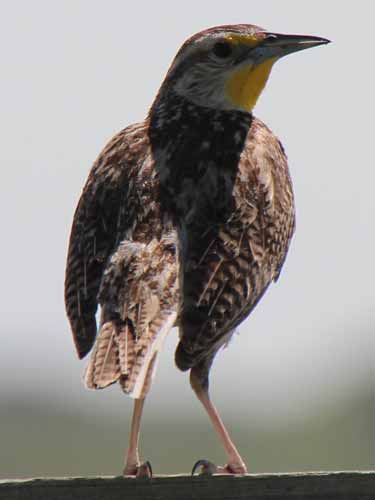
A Meadowlark
At the bottom of the loop was a ranger station. We stopped in to see if we could learn anything exciting. On the wall was a large map with movable animal magnets, indicating the latest spottings of various critters. It appeared that the bison were along the dirt roads. The ranger assured us the roads were fine for my car and so we headed into the backcountry.

A changing map. The prairie dogs and burros were right where we had seen them... so hopefully the bison would be as well!

click for a larger image
The dirt roads were even better than the ranger described, and the bison herds were even larger and more impressive!

Bison dot the hillside
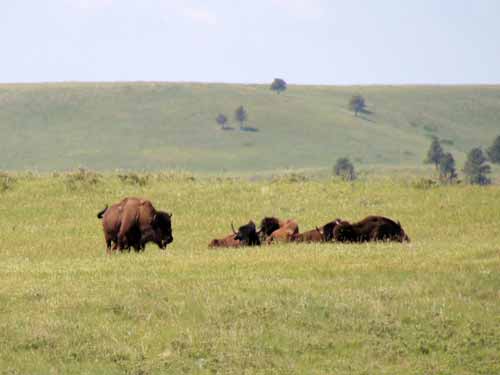

A lone female pronghorn leads her baby away. Baby pronghorns can walk in less than an hour after being born, and can outrun a man when four days old.
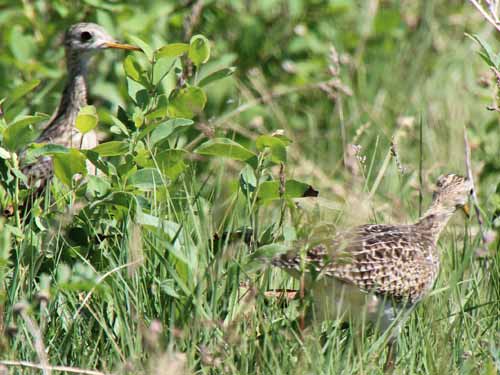
A pair of stealthy birds
We were driving along slowly, stopping briefly at each herd. We then rounded a corner and saw a couple heads over a small hill. As always, I turned off the car and we stepped out to get a few pictures. Slowly we realized the bison were moving towards us... slowly at first, but then clearly faster and faster. Their gait changed from a walk to a definite trot. Suddenly we notice a couple calves with them as well. We got back in the car. The bison weren't slowing and were headed straight for us! I turned the car on and slowly inched forward, hoping not to spook them even more. Suddenly they veered off and crossed the road behind us.

Oh look... some bison... far away...

The bison begin to head our way and the calves become visible.

Growing larger and larger...

... and moving faster and faster.

Passing very close to the car

Calves are born in the spring and are often yellowish-red in color.

Crossing the road behind us
We didn't have to go very far when we came upon two more enormous herds! They were so close to the car we could hear them snort as they ate. We could smell them too! Suffice to say we did not get out of the car this time!




A refreshing dirt bath

Some of the animals were tagged...
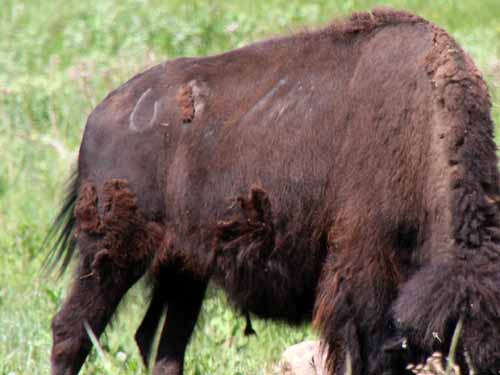
... or branded. At one time, there were millions of bison on the plains, but by 1900, it is estimated that fewer than 1,000 remained on the entire continent. In 1914, the park purchased 36 bison to start its own herd. By the 1940's, there were over 2,500 animals. As they began to overgraze the area, measures had to be taken to reduce the herd's size. So now, each year, they are rounded up, sorted through, and some of them are sold off. Currently there are around 1,300 bison in the park.

Sometimes it's just easier to take the path more travelled.

Oh please, take your sweet time.

So close!


We eventually finished the loop highway and made our way back toward the upper end of the park. One of the intersections was rather congested... not from cars but rather from bison! We parked and joined the other tourists in the amazement of being able to stand so close to such large wild beasts. And yoes, we had heard the warning several times already that every year people are killed by getting to close... but we made sure there was always someone nearby who looked like he/she would run slower than we could.


Perhaps just a hair too close!



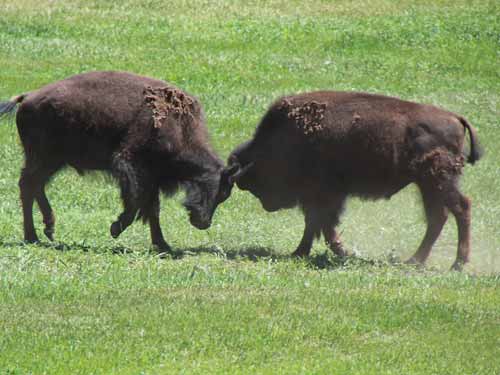
If this was just playing, I don't think I'd want to see a real fight!

Ok granted, it's a big animal... but that is still a VERY large tongue. Many of the bison were licking the gravel alongside the road. For salt perhaps?
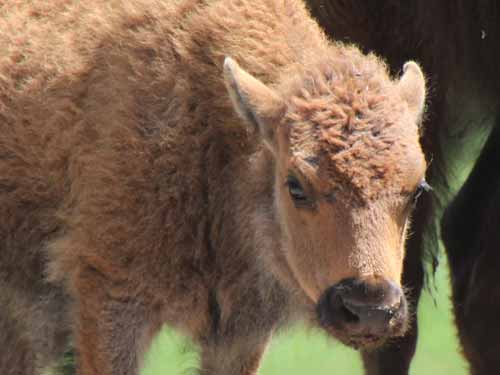
I can see the temptation. He does look cute enough to pet, doesn't he? But remember the previous picture of the bison butting heads?!

